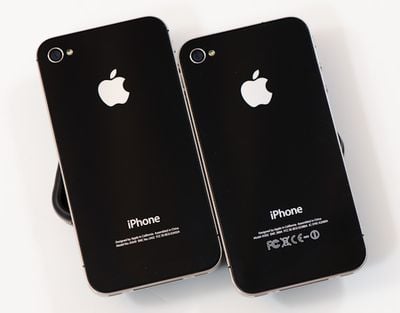Currently, the FCC requires any device that wants its certification to have a nameplate or etched label that displays an ID and approval from the agency. Today, the FCC has loosened its rules (via MultiChannel) regarding labeling, allowing manufacturers to bypass etching FCC labels on its devices, like Apple's iPhone.

Many consumer devices have very small surface areas for a label, or when etched on the surface, the labeling may cause damage or require very expensive techniques. In such instances, the rules permit the Commission to approve alternative means of displaying the required information.
The change comes shortly after Senators Deb Fischer (R-Neb.) and Jay Rockefeller (D-W.Va.) introduced the E-Label Act, which allows companies to meet the FCC's label demands using digital stamps on the device rather than etching labels onto the hardware. The two Senators argue the change would allow manufacturers to save money, allowing them to pass the savings on to consumers.
“As manufacturers continue to produce groundbreaking technologies, it only makes sense that federal labeling requirements for these products are updated to further promote innovation and create new opportunities in the digital age,” Fischer said in a statement. “This bipartisan measure will provide relief for job creators, benefit consumers, and promote modern regulations that better suit a 21st century marketplace.”
The FCC's solution is fairly similar to the one the Senators proposed, and would require companies like Apple to place the digital labels three menus deep within a phone's device menu. The device's user manual must include where to find the FCC labels, or the information must be on the manufacturer's website.
It's highly likely Apple takes advantage of either the FCC's new rules or the E-Label Act, as the labels sit counter to Apple's focus on clean, minimal design on its devices. However, it's unclear when or how Apple would take advantage of the new rules.
























Top Rated Comments
If there will be any changes they will be very small, the CE symbol, the 0682 (the organization that did the CE certification), the exclamation mark (class II radio device according to CE), the trash can (for WEEE, saying "electronics don't go into the trash can"), the declaration of origin and the model number are still required by european law. If you don't have those on the actual hardware you can't bring the iPhone to Europe. Yes, even if you are just visiting. So Apple will keep them.
And of course the IC ID, certification for Canada, will stay as well. And Apple will probably keep the serial number too.
So what can be removed? The FCC logo, and the FCC-ID. The next iPhone might come with slightly less print, but there will be print. Jony Ive will not be as happy as one could expect after reading the article.
EDIT: I used my mad pixelmator skills to show which labels will stay. Don't be too disappointed.
Asterisks much? :eek:
iPhone 4 was the most fragile iPhone design. It had glass on both sides which shattered too easily. It was bulky, blocky and heavy. It had sharp edges that didn't feel nice in your hand.